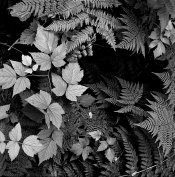There are reasons I seldom use manufacturer's development times. For one thing, they are generally too optimistic with respect to advertised film speed itself relative to my own requirements. Second, they are obviously going to recommend mainly their own developers, along perhaps with a few better known off the shelf products by prime competitors. I want specific results, not generic results. So in the end, whether I start with a film manufacturer recommended time and developer, or somewhere else, like the MDC, experimentation and fine-tuning is inevitable. That fact will never change. Black and white film development is all about personalizing the results. There never is and never will be just one correct answer.
But as far as a "good enough" negative means - I'd say versatility in terms of having all the information you need on it in a realistically usable fashion given modern printing papers. Very few negs yield a hole-in-one print, at least if you have high quality expectations. Some amount of manipulation, like dodging and burning, or adjusting VC contrast settings, is inevitable.
But your negative should be fairly cooperative in the process. If overexposed or underexposed, overdeveloped or underdeveloped, disappointment is likely. It takes some practical experience shooting, developing, and printing to determine your own needs best.



